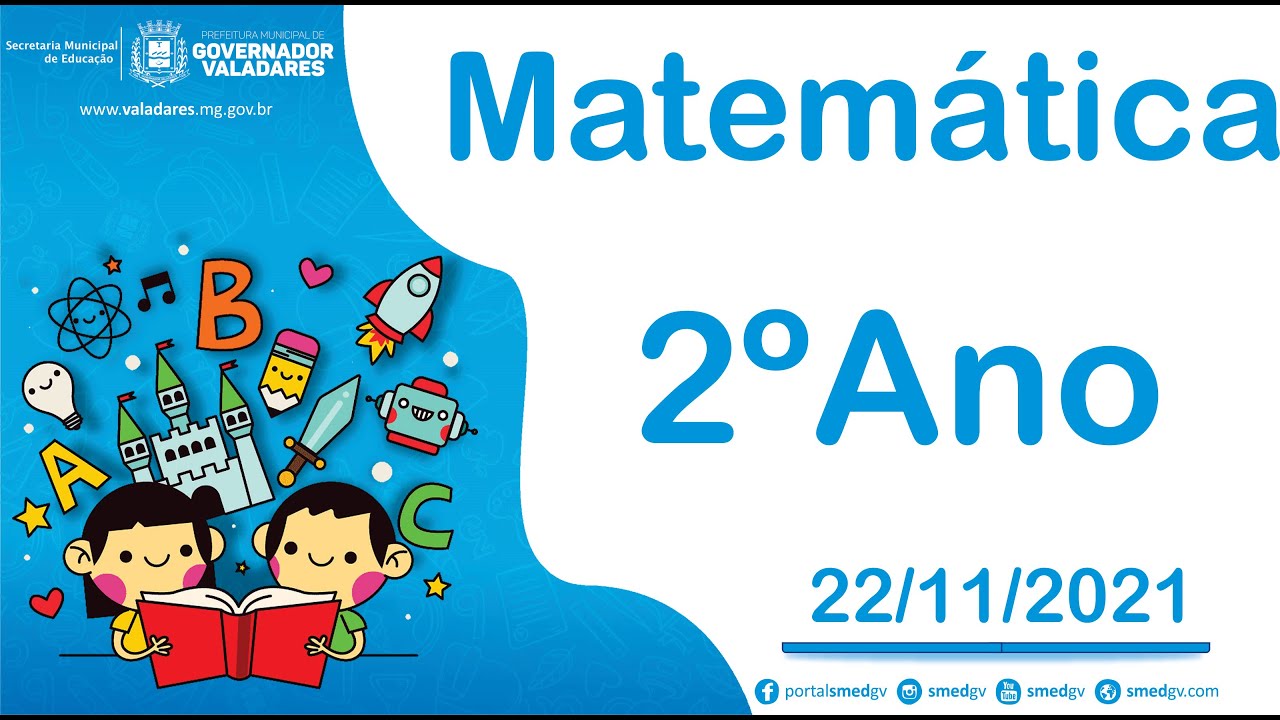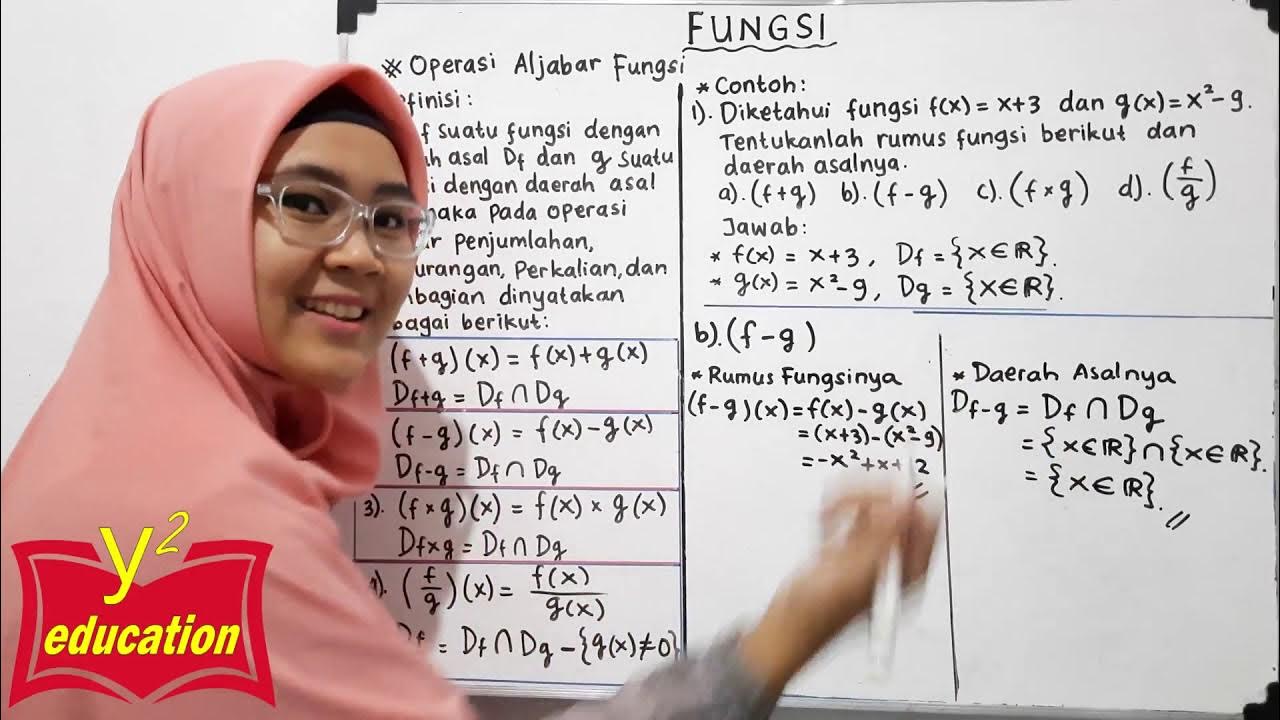Operation on Functions/Teacher Espie
Summary
TLDRIn this educational video, Teacher SV explains the four fundamental operations on functions: addition, subtraction, multiplication, and division. The video breaks down each operation using clear examples, starting with the basics of adding and subtracting functions, moving on to multiplying polynomials, and concluding with division. Teacher SV also discusses important rules, such as handling undefined values when dividing by zero. The video includes step-by-step explanations of factoring, using the FOIL method, and simplifying answers, making it easy for students to understand. Viewers are encouraged to subscribe for more tutorials.
Takeaways
- 📚 The video focuses on teaching the four fundamental operations on functions: addition, subtraction, multiplication, and division.
- ➕ The sum of two functions is defined as f(x) + g(x), similar to adding integers.
- ➖ The difference between two functions is defined as f(x) - g(x), similar to subtracting integers.
- ✖️ The product of two functions is defined as f(x) * g(x).
- ➗ The quotient of two functions is defined as f(x) / g(x), with the condition that g(x) must not be zero to avoid an undefined result.
- 🔢 Example functions f(x) = x² - 8x + 16 and g(x) = x - 4 are used to demonstrate the operations.
- 🧮 The instructor demonstrates the process of adding functions, following integer addition rules for combining terms.
- 📝 Subtracting functions involves changing the signs of the subtrahend and then proceeding with addition rules.
- 🔀 Multiplication of functions is shown using a polynomial multiplication technique.
- ❌ Division is explained by factoring and canceling common terms between the numerator and denominator.
Q & A
What are the four fundamental operations of functions?
-The four fundamental operations of functions are addition, subtraction, multiplication, and division.
How is the sum of two functions, f(x) and g(x), defined?
-The sum of two functions, f(x) and g(x), is defined as f(x) + g(x).
How do you calculate the difference of two functions?
-The difference of two functions, f(x) and g(x), is calculated as f(x) - g(x).
What is the product of two functions, f(x) and g(x)?
-The product of two functions, f(x) and g(x), is defined as f(x) * g(x).
How do you define the quotient of two functions?
-The quotient of two functions, f(x) and g(x), is defined as f(x) / g(x), where g(x) is not equal to zero.
Why is division by zero undefined?
-Division by zero is undefined because it leads to an indeterminate form. For example, dividing any number by zero does not yield a valid number.
In the given example, f(x) = x^2 - 8x + 16 and g(x) = x - 4, how do you compute the sum of f(x) and g(x)?
-To compute the sum, add the functions: (x^2 - 8x + 16) + (x - 4). The result is x^2 - 7x + 12.
What method is used to verify the result of factoring in this lesson?
-The FOIL method (First, Outer, Inner, Last) is used to verify the result of factoring.
How do you handle subtraction of two functions in the example provided?
-To handle subtraction, change the signs of the second function (subtrahend) and then proceed with addition. For example, subtracting g(x) from f(x) becomes: (x^2 - 8x + 16) - (x - 4), which simplifies to x^2 - 9x + 20.
How is the product of the functions f(x) and g(x) computed in the example?
-To compute the product, multiply the polynomials: (x^2 - 8x + 16) * (x - 4). The result is x^3 - 12x^2 + 48x - 64.
How do you perform division of two functions in the example?
-For division, factor both f(x) and g(x). In this case, f(x) = (x - 4)(x - 4) and g(x) = (x - 4). Cancel the common factor (x - 4), leaving the result as x - 4.
Outlines

Dieser Bereich ist nur für Premium-Benutzer verfügbar. Bitte führen Sie ein Upgrade durch, um auf diesen Abschnitt zuzugreifen.
Upgrade durchführenMindmap

Dieser Bereich ist nur für Premium-Benutzer verfügbar. Bitte führen Sie ein Upgrade durch, um auf diesen Abschnitt zuzugreifen.
Upgrade durchführenKeywords

Dieser Bereich ist nur für Premium-Benutzer verfügbar. Bitte führen Sie ein Upgrade durch, um auf diesen Abschnitt zuzugreifen.
Upgrade durchführenHighlights

Dieser Bereich ist nur für Premium-Benutzer verfügbar. Bitte führen Sie ein Upgrade durch, um auf diesen Abschnitt zuzugreifen.
Upgrade durchführenTranscripts

Dieser Bereich ist nur für Premium-Benutzer verfügbar. Bitte führen Sie ein Upgrade durch, um auf diesen Abschnitt zuzugreifen.
Upgrade durchführenWeitere ähnliche Videos ansehen

Operation of Functions

ATURAN DASAR OPERASI MATEMATIKA

As Quatro Operações Básicas da Matemática - Matemática 2º Ano - 22/11/2021

Komposisi Fungsi Part 1 - Operasi Aljabar Pada Fungsi [ Matematika Wajib Kelas X ]

Operasi Dasar Matematika pada Microsoft Excel 2010

Fungsi #Part 18 // Operasi Aljabar Fungsi (Bagian 1) // Buku paket hal 79-81
5.0 / 5 (0 votes)
